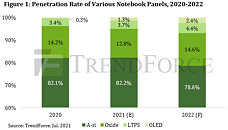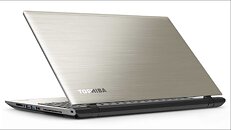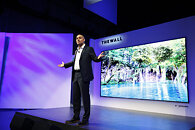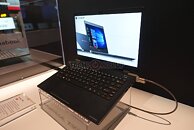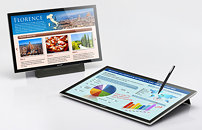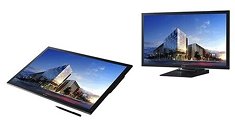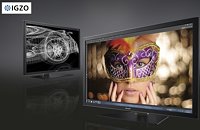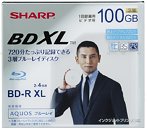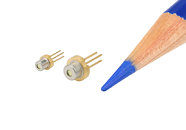
Nintendo "Switch 2" with 8-inch LCD Screen Reportedly Prepped for 2024
Earlier today, Bloomberg published a report that covers expert analysis of the Nintendo Switch successor's alleged display credentials. The media outlet cites claims made by Hiroshi Hayase—Research Manager (of Small Medium Displays) at Omdia. The analyst proposes that Nintendo's hardware design team has selected an eight inch LCD screen for their "Switch 2" games console, he also believes that the launch model is due at some point this year. Hayase-san has gleaned information from supply chain insiders—the Switch successor could double shipments of entertainment-oriented "small displays." Sharp Corporation is believed to be Nintendo's main supplier, according to interpretations of deliberately vague company statements.
Nintendo's 2017 launch model sported a 6.2-inch LCD display, a more portable Lite version arrived in 2019 with a 5.5-inch display, and a larger 7-inch OLED iteration was released back in 2021. Gaming communities have long speculated about an abandoned "Switch Pro" model—many believe that the project was dropped due to ongoing supply chain problems during lockdown periods. The Switch OLED (plus its modernized dock station) is believed to be an interim gap fill. Nintendo has revealed little about their next generation gaming console, but development partners have been making some noise lately. According to a 4Gamer.net interview article, workers at Japanese studios (CAPCOM, Koei Tecmo, and Spike Chunsoft) have expressed major excitement about the upcoming model's prospects. GDC's 2024 State of the Game Industry report revealed that 240 respondents have admitted that they are actively working on Switch 2 games software.
Nintendo's 2017 launch model sported a 6.2-inch LCD display, a more portable Lite version arrived in 2019 with a 5.5-inch display, and a larger 7-inch OLED iteration was released back in 2021. Gaming communities have long speculated about an abandoned "Switch Pro" model—many believe that the project was dropped due to ongoing supply chain problems during lockdown periods. The Switch OLED (plus its modernized dock station) is believed to be an interim gap fill. Nintendo has revealed little about their next generation gaming console, but development partners have been making some noise lately. According to a 4Gamer.net interview article, workers at Japanese studios (CAPCOM, Koei Tecmo, and Spike Chunsoft) have expressed major excitement about the upcoming model's prospects. GDC's 2024 State of the Game Industry report revealed that 240 respondents have admitted that they are actively working on Switch 2 games software.






